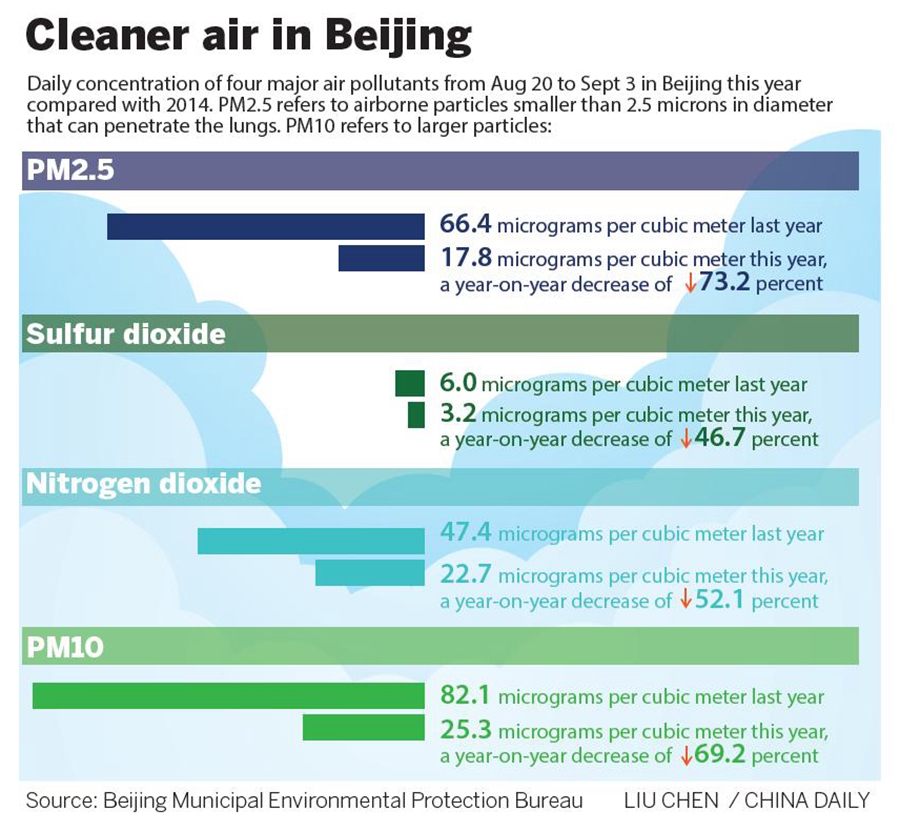
Beijing has seen a lot of azure-blue skies since Aug 20, when the government began taking strict control of industrial and automobile emissions ahead of last week’s military parade.
The air quality was “as good as some metropolises of developed countries”, the capital’s environmental watchdog said on Sept 6.
The daily concentration of PM2.5-airborne particles smaller than 2.5 microns in diameter that can penetrate the lungs and harm health-averaged only 17.8 micrograms per cubic meter from Aug 20 to Sept 3. This was the period of restrictions that included the suspension of work at polluting companies and construction sites, along with sharply curtailed driving.
The PM2.5 reading was reduced by an average of 73.2 percent year-on-year, the Beijing Environmental Protection Bureau said on Sept 6.
“For 15 days, residents have experienced good air quality,” said Zhang Dawei, director of the Beijing Municipal Environmental Monitoring Center. “It was as good as the annual index in some metropolises in developed countries, such as Paris, London, Moscow and Singapore.”
Events on Sept 3 marked the 70th anniversary of the end of World War II, and the clear skies were accommodating. At only 8 micrograms per cubic meter, PM2.5 was at its lowest in two years, the bureau said.
The reduction on PM2.5 was mainly due to the restriction of coal consumption and use of vehicles, said Zhang, though he said sulfur dioxide concentrations were also reduced.
According to Pan Tao, deputy head of Beijing Research Institute of Environmental Protection, the restrictions on the use of vehicles played a bigger role than industry in reducing major air pollutants.
Additionally, to reduce air pollution for the parade, Beijing and its six neighbors, including Tianjin and Hebei province, imposed pollution controls during the period.
Some 70 counties and cities in the region saw an average 40 percent reduction of PM2.5, Pan said. Without the effective controls, Beijing’s PM2.5 would have been 70 percent higher, or a rise of 17.8 micrograms per cubic meter, Pan said.
“We have imposed stricter restrictions to curb air pollution, and conducted more frequent inspections to make the implementation better,” said Fang Li, the deputy head of the bureau.
Pan and Fang agreed that the measures to curb air pollution were more effective than those adopted for the Asia-Pacific Economic Meetings in November. The regional average decrease of PM2.5 during APEC was around 38 percent-lower than the average decrease, Pan said.
Around 2,000 companies suspended production this time, 15 times the scale of the APEC period. Beijing authorities inspected more than 46,000 companies, 13,000 construction sites and 690,000 vehicles during the period.
“We have exposed over 1,000 violations, mainly from vehicles with excessive exhaust emissions and outdoor barbecues,” said Liang Wenyue, deputy head of the atmospheric management department of the bureau.
